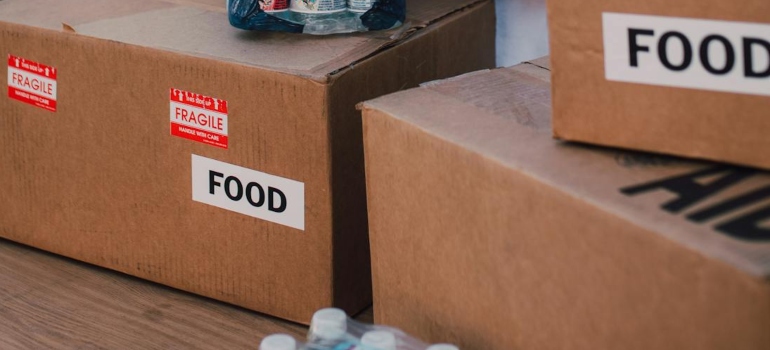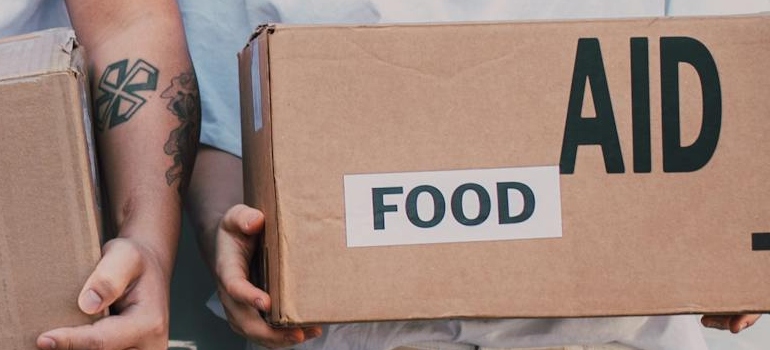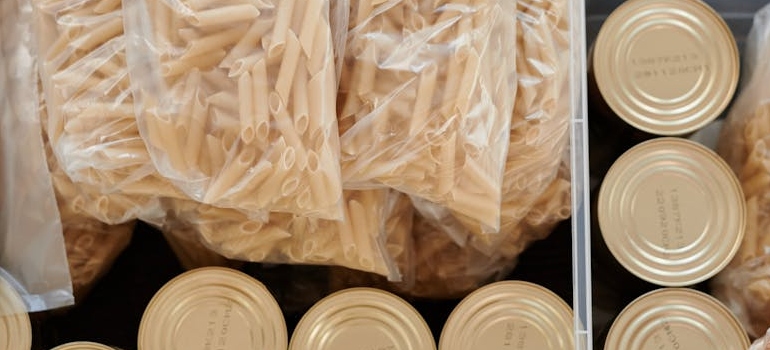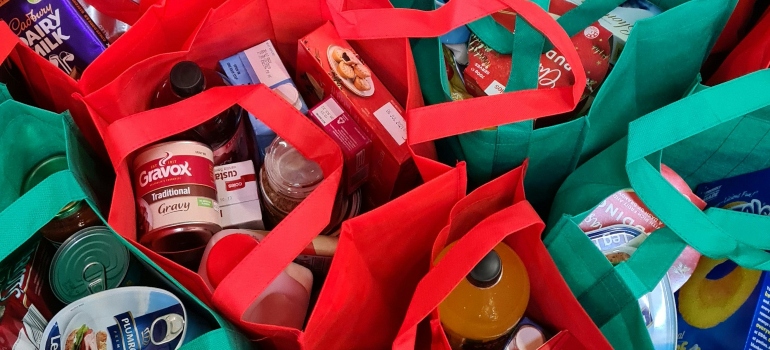Minimizing Food Waste During Relocation
Every year, Americans waste a staggering amount of food, contributing to environmental issues and economic loss. As a resident of Seattle, you understand the city’s strong commitment to sustainability and reducing waste. Yet, when it comes to moving, food waste often becomes an overlooked problem. It may be because of poor planning, the challenge of transporting perishables, or simply not knowing where to donate excess food. However, the result is often the same—perfectly good food ends up in the trash. To combat this issue that occurs during most moves, the best movers Seattle has will discuss how to effectively plan your meals and where to donate your surplus food and, thus, explore practical strategies for minimizing food waste during relocation.
Understanding Food Waste During Moving
Moving is a chaotic time, and food waste is a common but avoidable issue. Knowing why food waste happens during relocation helps you take steps to prevent it. The primary reasons for food waste include the following:
- Poor Planning: Often, we leave packing the pantry until the last minute, leading to rushed decisions and unnecessary waste.
- Perishable Items: Transporting perishable foods safely is a challenge, especially during long moves. Many choose to discard these items instead of risking spoilage.
- Lack of Awareness: Many people simply don’t know where or how to donate their excess food, resulting in it being thrown away.
Addressing these common issues with proactive planning and community engagement helps with minimizing food waste during relocation. Hence, recognizing the root causes of food waste equips you to tackle the problem head-on and make your move more sustainable. Now, let’s explore the steps you can take during the pre-move phase to use and donate your food efficiently.

Pre-Move Planning
Effective planning is the cornerstone of minimizing food waste during your move. Taking the time to inventory your pantry, plan your meals, and shop wisely ensures that food doesn’t end up in the trash. Let’s break down these steps to help you get organized.
Inventory Your Pantry
Start with a detailed inventory of your pantry. Knowing what you have on hand allows you to plan meals effectively and avoid unnecessary purchases. Additionally, using moving services in Seattle can help streamline the moving process, allowing you to focus more on your meal planning and less on the logistics of the move itself.
Begin by going through each shelf and cabinet, noting down all items. Separate items into categories: perishables, non-perishables, and partially used goods. This process will help you understand what needs to be consumed first and what can be donated or taken with you.
Checking expiration dates is crucial to prioritize items that need to be used first. This will also help you plan your meals to ensure nothing goes to waste. Perishables include fresh produce, dairy products, and other items with short shelf lives. Plan to use these first to avoid spoilage.
Non-perishables like canned goods, dry pasta, and rice can be packed safely for the move or donated if you have excess. Partially used items should be grouped together to ensure they are not overlooked. Therefore, taking the time to categorize and assess your pantry items allows for better meal planning and reduces the likelihood of wasting food.
Meal Planning
Once your pantry is organized, the next step is to plan your meals. Focus on using up perishable items first to avoid waste. Creating a meal plan will not only help reduce waste but also simplify your moving process. Plan meals that incorporate as many perishable items as possible. Consider batch cooking and freezing meals that can be easily reheated during the busy moving period. This is particularly useful for using up vegetables and meats that might otherwise spoil.
Incorporate pantry staples to balance your meals and use up partial items. Look for recipes that are versatile and can accommodate various ingredients from your pantry. For example, soups, stews, and casseroles are excellent for using up a variety of perishable and non-perishable items.
Utilize recipes that focus on reducing waste. For instance, a vegetable stir-fry can help use up the remaining produce, while a mixed bean salad can clear out your pantry’s legume section. These recipes are not only efficient but also nutritious and easy to prepare. Effective meal planning ensures that you use up as much of your food as possible before moving, reducing waste and easing the moving process.

Smart Shopping Before the Move
As moving day approaches, it’s crucial to shop wisely. Avoid buying in bulk or stocking up on items that you won’t be able to consume in time. Focus on what you need for your planned meals and buy only what is necessary. While bulk buying can save money, it often leads to excess food that might not be consumed before your chosen moving company in Washington arrives. Stick to purchasing smaller quantities that you know will be used up quickly.
Make a shopping list based on your meal plan and stick to it. This helps prevent impulse purchases that could lead to waste. Focus on items that are essential for your planned meals and avoid unnecessary extras. If you must restock, opt for items with long shelf lives. These can be packed and moved without the risk of spoiling.
Smart shopping, combined with effective meal planning and pantry organization, is significantly minimizing food waste during relocation. Following these steps ensures a more sustainable and efficient relocation process.
Food Donation Options
Donating your surplus food is a great way to minimize waste and support those in need. Seattle offers several food banks and community organizations that accept donations. Additionally, programs like Move For Hunger partnering with your local movers in Seattle make it easy to donate food when you move.
Local Food Banks
Seattle has a robust network of food banks that welcome donations. These organizations play a crucial role in supporting local families and reducing food waste:
- Seattle Food Bank: Accepts canned goods, dry foods, and other non-perishables.
- University District Food Bank: Focuses on healthy, nutritious food donations.
- Rainier Valley Food Bank: Welcomes a wide range of non-perishable food items.
These food banks are vital resources in the community, providing essential support to those in need. They accept various types of non-perishable foods, including:
- Canned vegetables, fruits, and soups;
- Dry pasta, rice, and grains;
- Boxed cereals and snacks;
- Peanut butter and other shelf-stable spreads;
- Sealed, non-expired packaged goods.
Before donating, ensure your items are non-perishable and within their expiration dates. Packaging should be intact, and if possible, use sturdy bags or boxes for delivery. Labeling the contents of your donation can also help food bank staff sort and distribute items more efficiently. These simple steps can help ensure your donations are useful and appreciated.
Move For Hunger Organization
Move For Hunger is a national organization that partners with moving companies to collect and deliver non-perishable food donations to local food banks. This program makes it easy to donate your excess food during a move and ensures it reaches those in need. Move For Hunger makes donating food during a move simple and convenient. How to participate in their program?
- Check with Your Mover: Ask if your moving company partners with Move For Hunger.
- Pack Non-Perishables Separately: Set aside your non-perishable food items in a designated box.
- Inform the Movers: Let your movers know you have food donations ready for collection.
- Donation Delivery: The movers will take care of delivering the food to a local food bank.
They collect unopened, non-perishable food items from people who are moving and deliver them to local food banks. Since its inception, Move For Hunger has helped provide millions of meals to families in need.

Safe Transporting of Food
Transporting your food safely is essential for minimizing food waste during relocation and ensuring nothing spoils. Properly packing non-perishables and transporting perishables with care can help you move your pantry efficiently and sustainably.
Packing Non-Perishables
Non-perishable foods like canned goods and dry foods are relatively easy to transport if packed correctly. Here are some key tips to ensure your items arrive safely:
- Use small to medium-sized boxes to avoid overloading. Heavy boxes are difficult to carry and can break under the weight.
- Reinforce the bottom of each box with packing tape to prevent it from collapsing.
- Place heavier items like canned goods at the bottom and lighter items on top.
- Fill any gaps with packing paper or bubble wrap to prevent movement and damage during transit.
Choose sturdy, corrugated cardboard boxes to handle the weight of canned goods and dry foods. Label each box clearly with its contents and destination room, making unpacking easier and helping you find essential items quickly. Consider using color-coded labels or markers for different types of food or rooms.
Transporting Perishables
Perishable foods require special care during a move to prevent spoilage. Proper packing and time management are crucial to keep these items fresh.
Pack perishable items in insulated coolers to maintain a safe temperature during transit. Use ice packs or frozen gel packs to keep food cold, placing them around the food to ensure even cooling. Dairy products and meats should be kept at or below 40°F (4°C) to prevent bacterial growth, while fruits and vegetables can be transported at slightly higher temperatures but should still be kept cool to maintain freshness.
Plan your move to minimize the time perishables spend outside of refrigeration. Load perishables into your vehicle last and unload them first to reduce exposure to warm temperatures. If your move is with long-distance movers in Seattle, consider stopping at a hotel with a refrigerator to keep perishables cool overnight.
Minimizing Food Waste During Relocation with Creative Solutions
When preparing for a move, reducing food waste can become a creative and community-focused effort. There are several innovative ways to ensure that excess food is used efficiently rather than discarded.
Food Sharing with Neighbors
One effective strategy for reducing food waste is to organize a neighborhood food swap. This involves gathering neighbors to exchange surplus food items, ensuring that nothing goes to waste. Start by setting a date and inviting your neighbors to participate.
You can use community boards, local bulletins, and social media platforms to spread the word. Apps like Nextdoor or local Facebook groups are excellent tools for organizing such events. Neighborhood food swaps not only help manage your surplus food but also strengthen community ties.
Casual exchanges also work well for perishable items that need to be consumed quickly, like fresh produce and dairy products. Simply letting your neighbors know you have extra food can lead to spontaneous sharing. Communicating with your neighbors about your excess can significantly reduce waste during relocation and build stronger relationships within the community.

Using Food-Sharing Apps
Technology offers another practical solution for reducing food waste through food-sharing apps. Seattle has a variety of these apps that connect people with surplus food to those who need it. Apps like OLIO and Food Rescue US are popular choices. These platforms allow you to list surplus food items, which can then be picked up by others in your area.
To use these apps effectively, start by creating a profile and listing the items you want to share. Include clear descriptions and photos to attract potential takers. Arrange convenient pick-up times and locations to ensure a smooth exchange.
Hosting a Pre-Move Party
Hosting a pre-move party is another fun and effective way to reduce food waste. Invite friends and family over to help consume leftover food before your move. This not only prevents waste but also gives you a chance to say goodbye to loved ones in a meaningful way.
Creative party themes can make the event more enjoyable and focused on reducing waste. Consider themes like “Potluck Party”, where everyone brings a dish made from leftover ingredients, or “Zero-Waste Dinner”, where the goal is to consume everything prepared. These themes encourage guests to be mindful of waste and enjoy a unique culinary experience.
A pre-move party turns the often stressful task of moving into a positive and community-oriented event. Engaging in these creative solutions ensures a more sustainable move by minimizing food waste during relocation and fosters a sense of togetherness among your friends and neighbors!
Why Choose Us
History
Hansen Bros. Moving & Storage is locally owned and operated by the same family for four generations, since 1890. We have a well-established reputation for service quality and reliability with a high percentage of repeat household and commercial clients.
Professionalism
We’re a certified ProMover by the American Moving and Storage Association with A+ rating with the Better Business Bureau, voted “Best in Western Washington” in 2009 and from 2011 to 2016 by KING5. Our company is fully licensed and insured and member of WMC and AMSA.
Value
Hansen Bros. Moving & Storage provide free, no-obligation in-home estimate and competitive rates, including low minimum rates for shipments moving under 300 miles. We’ve set a refund policy for unused packing materials and three Puget Sound locations to help clients save on travel fee costs.



